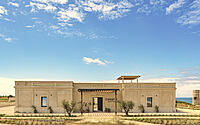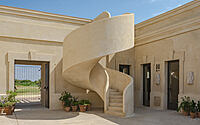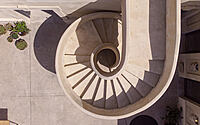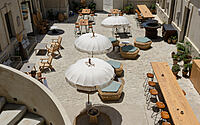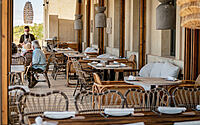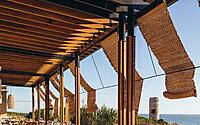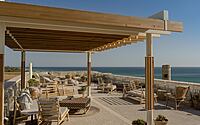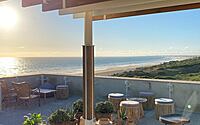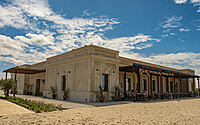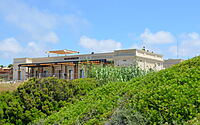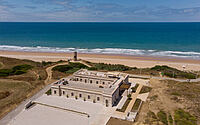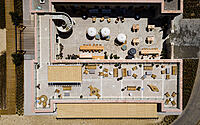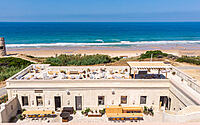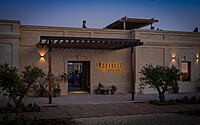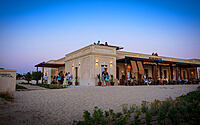El Cuartel del Mar by More-co
El Cuartel del Mar is an amazing restaurant for 150 guests located in Chiclana de la Frontera, Spain, redesigned in 2021 by More-co.

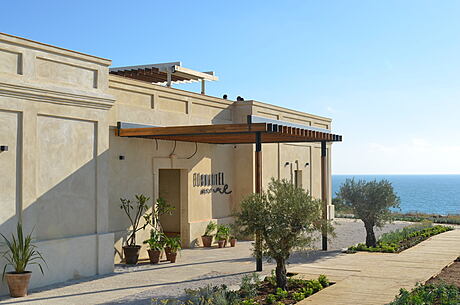
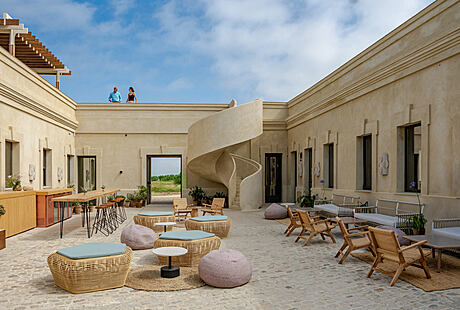



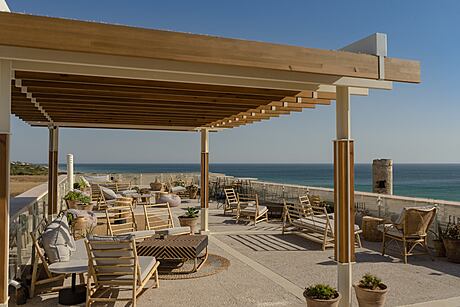
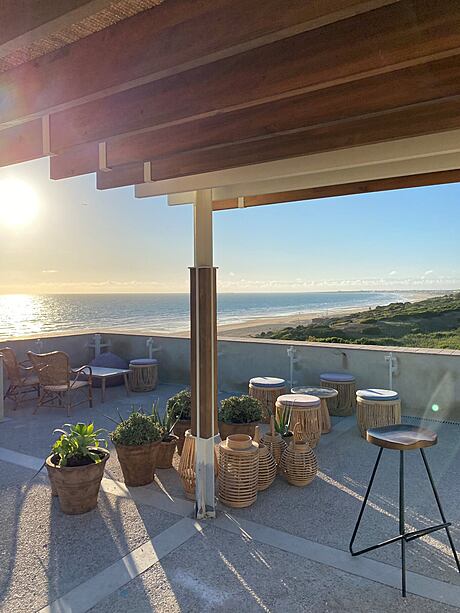
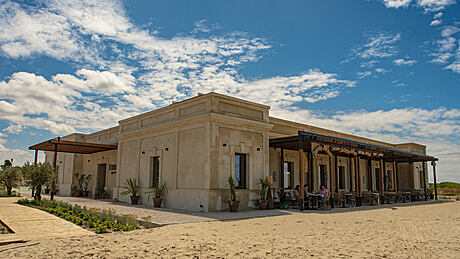

Description
An old Civil Guard station with views of the Atlantic Ocean
A sublime combination of culture and gastronomy in a special location, EL CUARTEL DEL MAR was developed by Madrid-based hospitality group AZOTEA GRUPO, which assigned the design and restoration of the building to Paula Rosales’ studio more&co in Madrid.
This venue is situated in the old Civil Guard Station of Loma del Puerco, in Chiclana de la Frontera (Cadiz), in a 2,000sqm-wide area. Opened in summer 2020, EL CUARTEL DEL MAR boasts a beautiful terrace with breath-taking views of the immense Atlantic Ocean, a patio that can host up to 250 people and a restaurant with room for 125 guests. Not to mention its awe-striking lookout rooftop terrace, a privileged spot to admire the area’s marine and terrestrial biodiversity.
Both during the conceptualisation and realisation of this project, Paula Rosales and her team placed their focus on highlighting and protecting the unique features of Playa de la Barrosa and its surroundings. This important task was then brought to completion with the fine, delicate décor of Alejandra Pombo’s studio and Rent a Garden’s landscape design with native plants, resulting in a spacious, impactful and unique space. “Choosing materials that honoured the local environment was key to this project, both in terms of nature – by taking into consideration the whole range of peculiar flora and fauna – and in terms of the station’s rich history,” explains Paula Rosales of more&co studio.
The architecture of EL CUARTEL DEL MAR
The project of Paula Rosales’ Madrid-based more&co studio for the rehabilitation and restoration of the old Civil Guard station aimed to turn it into a restaurant and an exhibition hall open to the public. This building is situated in what we could call a “privileged location” for a variety of reasons. On one hand, its natural surroundings are truly unique, with the hillside of Loma del Puerco and Playa de la Barrosa. Secondly, the area is renowned for being the setting of the Battle of Chiclana, which took place on March 5, 1811, and was one of the most relevant episodes in the Spanish War of Independence. Moreover, just a few metres away from the old station we can find Torre del Puerco tower, which used to be a military watchtower for guarding the coast against the attacks of the Berbers. The building’s strategic position is perfect for enjoying both the watchtower and the beach, from which you can see the entire sun path from sunrise to sunset.
The building’s change of use required a rethink of the spaces to adapt them to their new life. Two longitudinal units run parallel to the beach. The west pavilion, closer to the coast, houses both the restaurant and the kitchen, whereas the east pavilion contains the exhibition hall and service spaces required for the entire complex. The pavilions are connected to the main access in the northwest façade, closing in to create the patio, which is the backbone of the building and the distributor of movement, as well as of the connection between the building’s interior and exterior. The new spiral staircase is incorporated into the project to allow access to the roof for birdwatching and enjoying the breath-taking views. In fact, on a cloudless day one can clearly admire the Castle of Sancti Petri. The spiral climb invites visitors to explore the building from a variety of viewpoints as it rises above the patio and reveals the line of the horizon.
The restoration of the building focused on enhancing and giving prominence to the original construction while also integrating the new installations and structures required by current regulations as respectfully and discreetly as possible. As if they’d always been there.
Passive sun protection strategies were also incorporated into the project, such as wooden pergolas to control natural light and the effect of sunlight on the property and its users, as well as light colours for the building envelope to prevent it from overheating.
Respect for the building’s local surroundings involves not only promoting the natural and historical value of the property at issue, yet also integrating it within the structure itself by adopting local materials and artisan, construction techniques, empowering the area’s identity while introducing a modern, contemporary vision. The new, restored building boasts natural, minimally-treated materials with a clear Spanish origin, and welcomes its guests within a comfortable, informal and fresh space with a local and national design.
The project of Paula Rosales’ more&co studio coated the building’s façades and interior partitions in light-hued lime mortar. Associated with traditional constructions found in Cádiz, this material is like a breathable skin that protects the building, ensuring the emotional and physical wellbeing of its dwellers. The roof is insulated and covered in gravel or continuous concrete paving, once again in light hues for sun protection and to integrate it into the landscape from a bird’s eye view. The roof and patio have also been enriched with low-maintenance vegetation for the same reason, establishing a connection with the surrounding landscapes. The car park boasts gravel of the same tone colours, creating a road surface texture that forces vehicles to slow down for the comfort of pedestrians.
The wooden joinery of the doors and façade windows, with high thermal and acoustic insulation performance, was selected for being a warm, natural material that makes the interior feel more comfortable. Wood was also chosen instead of metal for its long-term durability, given the aggressive marine atmosphere to which it is constantly exposed. Details in clay, stone and reused elements recall the connection with the area’s rich history. In the interior of the building, the continuous polished concrete paving allows great flexibility when it comes to space distribution, lending a natural appearance and leaving the limelight to the outdoor views from the windows. The wooden and braided wattle false ceilings are repeated in the external pergola creating a continuous play of indoor-outdoor spaces, with hidden acoustic insulation in the interior. The cooling breeze of cross ventilation between the façades and the beautiful sound of the waves will do the rest. You’re at CUARTEL DEL MAR, just a few steps away from the beach.
Photography by Azotea Grupo
Visit More-co
- by Matt Watts